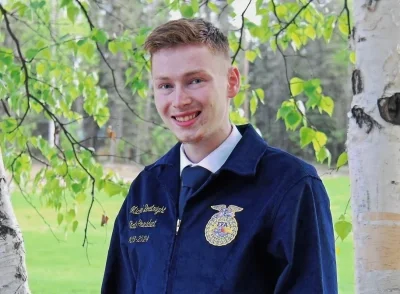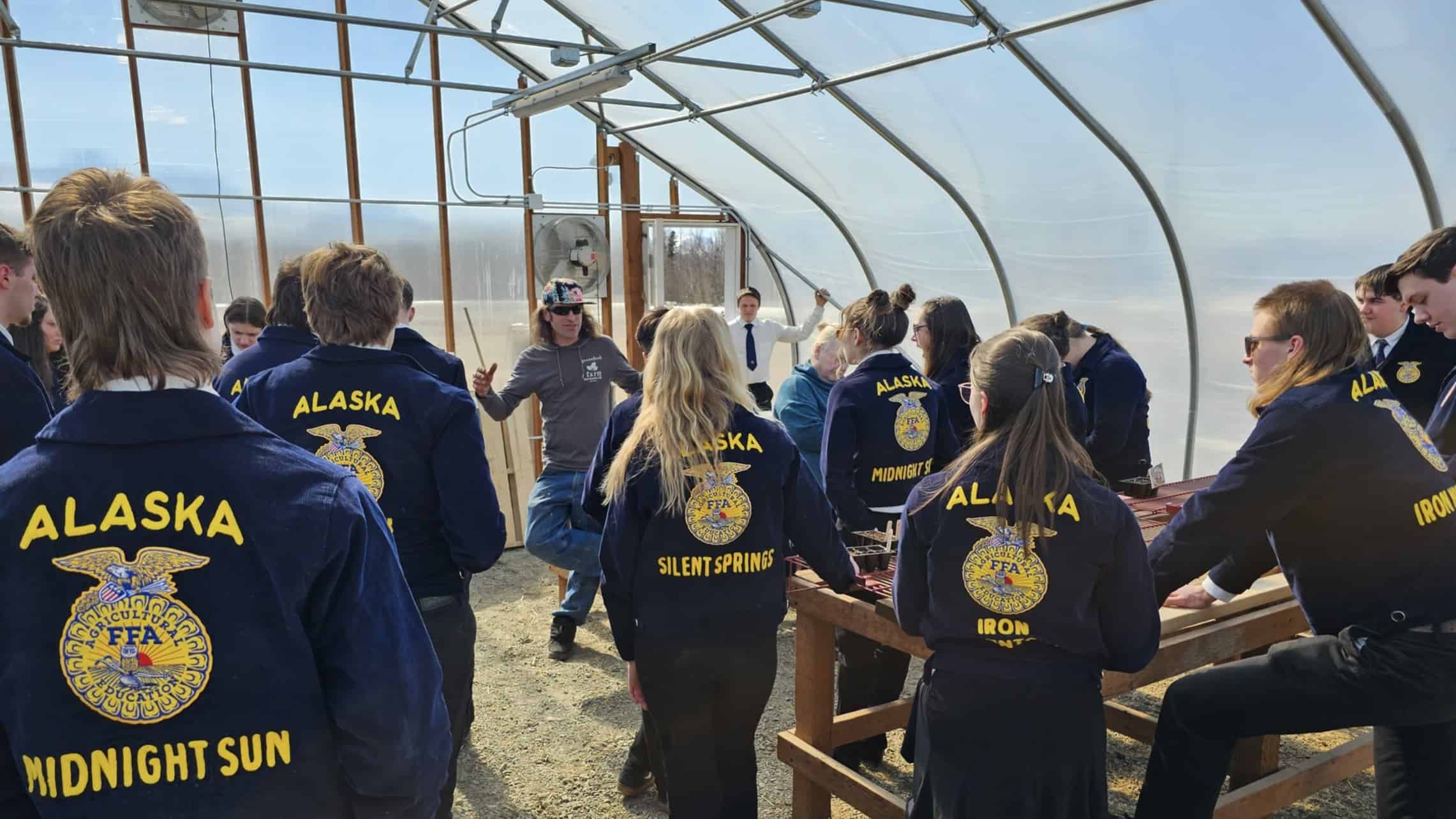There’s more to Alaska than glaciers and moose. This is the message Michael Boatright, 2023-24 Alaska FFA state president and Midnight Sun FFA member, shares with FFA members from other states.
“A lot of people have the perception it snows here all the time and it’s too cold to grow anything,” he says.
The nation’s largest state has a diverse agriculture industry. In addition to growing crops such as hay, potatoes and carrots, Alaska has niche farming operations, including peonies and reindeer. Animal agriculture is also common, and Boatright notes there are several cattle ranches and poultry farms.
Weather does impact the growing season. Crop production ceases in the winter when the temperatures drop (the average temperature in February is minus 5 degrees Fahrenheit). Some parts of the state experience more than two months of darkness, so FFA members tending to livestock must carry flashlights while doing their farm chores.
In the summer, when the sun shines almost 24 hours a day the combination of extended daylight and moderate temperatures gives some crops a boost. As an example of the benefits of Alaska’s climate, Boatright points out award-winning pumpkins and cabbages grown on farms in the northern Alaska town of Fairbanks.
The weather doesn’t just impact agriculture; it also dictates the FFA schedule.
An Expansive State
In total, Alaska has 10 chapters. More than 480 miles separate Silent Springs FFA in the northern part of the state from Iron Mountain FFA in the south. Most events, including the Alaska FFA State Convention, are held during the summer when there are extended daylight hours and better road conditions — an important consideration for members traveling long distances to attend.

As the current Alaska FFA state president, Michael Boatright shares his FFA story with others.
“Something that makes us unique is how spread out we are,” Boatright says. “Alaska is the biggest state in the U.S., and we have one of the smallest memberships in FFA. We have to drive a lot [to meet with each other].”
Despite the challenges, Boatright believes FFA chapters in Alaska offer opportunities that are as diverse as its membership.
“One of the things I think would be surprising to people is how diverse our supervised agricultural experiences can be,” he says. “We’ve had members focus on natural resources, fisheries and farming. Since we’re so diversified, it creates a good experience for our members.”
With 945,988 members nationwide, including Alaska, the National FFA Organization reached a record-breaking membership this year. Learn more at ffa.org/our-membership/.












